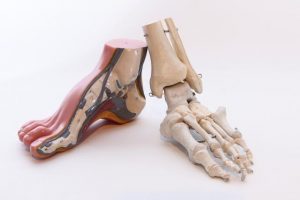PEDORTHICS (n): the design, manufacture, modification and fit of footwear and orthoses to help deal with pain, discomfort and disabilities in the legs and feet.
A pedorthist is an individual who is trained in the manufacturing, fitting and
modification of foot appliances and footwear to assist in:
These practitioners provide:
 If you, or a member of your family are dealing with foot pain, are suffering from a disease process which can affect your feet, circulation or sensation, or have noticed an abnormal wear pattern to your footwear, you may want to visit your local Pedorthic Practitioner. They may be able to help you deal with your foot and lower limb discomfort.
If you, or a member of your family are dealing with foot pain, are suffering from a disease process which can affect your feet, circulation or sensation, or have noticed an abnormal wear pattern to your footwear, you may want to visit your local Pedorthic Practitioner. They may be able to help you deal with your foot and lower limb discomfort.
As one of the few medical professionals educated in the design, fit, manufacture, and modification of footwear and foot orthoses (Orthotics), Certified Members of the Pedorthic Association of Canada (PAC) are regularly called upon to fill prescriptions and make recommendations.
Every foot requires special attention. Variables such as overall length, heel to ball length, and width are assessed in both a seated and standing position. Other variables may include bony deformities of the greater and lesser toes, instep height, amputations, ulceration, and biomechanical anomalies such as over-pronation or over-supination, in-toeing or out-toeing.
Certified Pedorthists are trained to deal with these and many more complicated situations of the human foot. In many cases, internal or external modifications may be indicated to treat these deformities, and can come in the form of sole lifts, rocker soles, balloon patches, and changes to the profile of a shoe’s upper. A custom made foot orthosis (Orthotic) may also be required to deal with specific biomechanical (movement) problems, pressure distribution, or impact. Your Pedorthic Practitioner is qualified to treat these and many other conditions of the foot and lower leg.